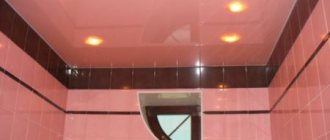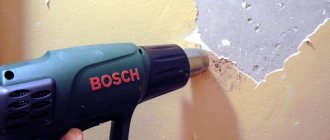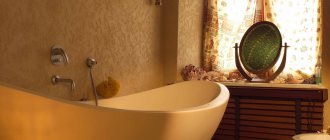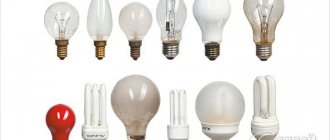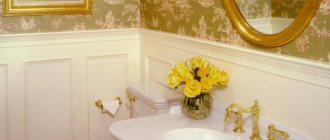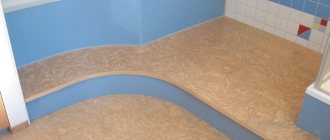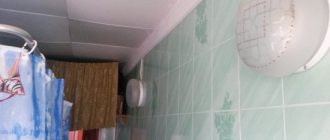Soundproofing a bathroom wall
The bathroom is a place where you can take a break from the bustle of the city, relax, think, take an aroma bath and be in silence. But how can you do this if water is pouring down the riser from above, the elevator doors opened on the side, and someone broke a glass from below. Soundproofing the wall in the bathroom is desirable for your own comfort and coziness. Materials are used that do not rot under constant exposure to moisture. Installation is carried out according to the instructions created by the craftsmen.
Soundproofing the toilet and laying a silent sewer system
All work on soundproofing pipes in the toilet is carried out after determining the location of the noise and its causes. In particular, if noise occurs in an already installed sewer riser, then its sound insulation is carried out using special sound-absorbing materials, securing them with special tape, as mentioned above.
Soundproofing of other pipes in the system that are a source of noise is carried out in approximately the same way. Foam rubber or foam plastic, which are placed on the pipe in the form of a casing, are often used as roll materials for soundproofing sewer pipes in the toilet. Such coatings, along with the sound-absorbing effect, perfectly protect pipes from damaging external influences (mechanical, corrosive and others).
If you need to lay a silent sewer system from scratch or replace sewer pipes, you should take into account the sound-absorbing features of the materials used in their manufacture. In particular, steel pipes are considered the noisiest products for laying a sewer system.
Soundproofing problem in the bathroom
When purchasing an apartment, owners pay attention to the shortcomings, including sound insulation. These are not only loud, audible sounds from the street, landing, or neighbors’ apartment. But also audibility in the bathroom. This may come to light later, while taking a bath, or while relaxing, you can hear a child playing a computer game or a neighbor watching TV. You can often hear the noise of a descending elevator, the voices of animals, or water draining from neighbors above.
This does not allow you to comfortably take a bath or relax after a working day. Drain pipes are often not insulated (even in new houses). At night you can hear the sound of water draining or the sound of a cast iron bathtub filling.
To carry out the soundproofing process, you need materials, tools and knowledge of the stages of work. Properly done sound insulation will eliminate annoying sounds at night and bring comfort and peace of mind.
Why doesn't cast iron make noise?
Why doesn't cast iron make noise? Metal is not noisy, but plastic is noisy? Metal, but not quite. Cast iron is a eutectic alloy, a collection of microscopic grains of different composition and properties. Because of this, cast iron has a low mechanical quality factor: the grains rub against each other, absorbing vibration. And the cast iron pipe quickly becomes overgrown with plaque inside, which additionally dampens vibrations.
Due to the eutectic structure, the elasticity of cast iron is also negligible - everyone knows how fragile it is. Before a cast iron product dings for any reason, it will fall apart. The frames of grand pianos and pianos are still cast from cast iron, ignoring the most modern materials: any other frame will either not withstand a string tension of 20 tons, or will produce overtones.
Materials
The construction market has a large selection of materials that create sound insulation and insulation. But, to carry out such procedures, you need materials suitable for rooms with high humidity.
- Mineral (basalt) wool. Does not disintegrate when exposed to moisture. It also doesn't burn. It has the properties of muffling noise and insulating the room. To use cotton wool, you need to choose the right waterproofing material.
- Polymer membrane. This is a rolled material, up to 4 mm thick. On one side it is sticky, which makes installation easier. When using a membrane, you should take care of the material that will cover it.
- Noise-absorbing panel. Has a mineral filler. Moisture-resistant, vapor-permeable, which is an important factor. It's easy to install. After installation, the seams of the panels are sealed with tape.
- Application of soundproofing plaster PalaplasteR-207. It is applied in a layer of 3 cm. It is cement based and is moisture resistant.
Before using the material, you must carefully study the technical specifications.
Under tiles
Tiles in the bathroom are laid on the walls and floor.
To soundproof the walls, use basalt wool no thicker than 5 mm and a water barrier. They create a metal frame for moisture-resistant plasterboard sheets. After this, the joints are reinforced, the gypsum boards are puttied and primed. A membrane and noise-absorbing panels are laid on the floor. After this, a screed is made and the tiles are laid.
On the walls
Rolled waterproofing material or bitumen-based mixtures are suitable for walls. Soundproofing material should not rot from moisture. Green Knauf plasterboard sheets.
If you choose sound-absorbing panels, the joints should be carefully sealed with tape and joint putty.
Cement-based soundproofing plaster does not absorb moisture. Before application, the walls must be treated with a bitumen-based mixture.
Ready-made ZIPS tongue-and-groove panels. It is a combination of gypsum fiber sheets and staple fiberglass.
To the ceiling
A metal frame is created for the ceiling, into which soundproofing material is placed.
This is mineral wool. And also a way out of a noisy situation would be to create a suspended acoustic ceiling.
For it, slabs made of thin fiberglass and mineral fiber are chosen.
The metal frame for the ceiling is created using vibration suspensions and damper tape.
On the floor
When performing soundproofing of the floor, it is necessary to select a waterproofing material. Mostly solutions of bitumen and polymers are chosen. After treatment with bitumen, a membrane is laid. The joints must be glued together with adhesive tape.
For the floor, fiberglass "Shumanet-100" 3 mm, as well as "Shumanet-P60" - 20 mm, are used. foam propylene, cork agglomerate, and silica fiber are also laid. After this, make a 6 cm screed and lay tiles or create a “warm floor”.
How to properly soundproof a pipe
First of all, you need to cut the material correctly. Do this so that you can wrap the entire pipe in one piece. No need to skimp here. Buy enough soundproofing immediately.
After this, attach the material well and adjust its joints. Secure with construction tape. Do this so that the pipe is securely clamped. The cracks and gaps will allow noise to pass through, making the entire procedure useless.
After this, wrap the pipe tightly with construction tape, but this time do not grab it, but completely cover the communications with it in at least three layers. With this manipulation you will increase the mass of the product, which will also reduce the likelihood of resonance.
Is it necessary to insulate and soundproof the riser of the room?
Sewer pipes always create the sound of falling water.
Even if they are plastic, the noise is still present. Then the problem of getting rid of these sounds arises. Pipes are insulated and soundproofed using rolled materials. Let's say the Texound membrane. It prevents condensation and dampens noise.
Foamed polyethylene will also protect residents from noise, but it does not provide insulation. After wrapping with polyethylene, the pipes are hidden under the frame and gypsum board, and tiles are laid on top.
Causes of noise
The causes of noise in sewer pipes may be as follows:
- insufficient strength of pipe walls;
- the material from which the drain system is made;
- poor placement of pipes in the apartment;
- poorly selected seal.
The main source of unnecessary sounds in the sewer system is the riser. The drain streams moving in it usually create quite strong vibrations, which can cause significant discomfort. Moreover, they may be unsafe for the physical and mental health of people living in the apartment.
This is quite simply explained - moving down, wastewater comes into contact with each other, as well as with various elements of the drain system and with the walls of the pipes. All this leads to vibrations, which are transmitted to the main floors as the water drains. In addition, the drain water comes into contact with the air that is inside the riser. Moreover, the more intense the speed of fluid movement, the louder the sound, which is why the inhabitants of apartments on the first floors experience more discomfort than those whose apartments are located under the roof.
There are several types of noise in the sewer system.
- Drums. They occur when water falls and comes into contact with elements of the drainage system. This type of sound cannot be eliminated. The only thing that experts advise is to reduce it to a minimum.
- Airborne. They occur due to the contact of water with air inside the pipe. This type of noise occurs rarely and its intensity is mild.
- Structural. These are rather unpleasant types of sound variations; its source is directly from the inside of the pipes, parts of the sewer system, walls and ceilings, which are in constant contact with the riser. They arise due to the transfer of vibrations from the pipe to the structural elements of the building. It is this type of noise that needs to be eliminated as completely as possible, and from the point of view of installation technology, this is quite simple to do.
It is necessary to dwell in more detail on what can affect the level of unpleasant noise. In addition to the number of floors, this parameter is influenced by the material from which the pipes are made. According to experts, plastic products create much more pronounced noise than cast iron ones. This is due to the high degree of mechanical quality factor of the metal alloy. It consists of small particles that rub against each other and thereby absorb the main flow of vibration, which is the cause of audio effects. Another point is plaque, which often forms on the inner surface of cast iron pipes; it acts as a kind of sound insulator.
But plastic does not have similar characteristics, which is why such pipes can be compared to a musical instrument, which actively transmits the sounds of the drains themselves and reflects all the vibrations due to their flow. In addition, plaque does not form in PVC pipes. On the one hand, this significantly increases their service life, but on the other hand, it completely eliminates the possibility of the formation of any soundproofing layer of natural origin inside the sewer system itself.
The location of the pipes can also play a role. From the point of view of sound insulation, the most correct would be to place the sewerage system in the interfloor space, outside the residential premises. When designing houses, it is strictly prohibited to pass a riser through interior ceilings. Only interfloor crossings are allowed, which can significantly reduce the level of vibration. The sealing gasket also affects the audibility of extraneous sounds. Often, when carrying out repair and construction work, polyurethane foam is used to equip the sewer system - this is a fairly common mistake, since foam is not a soundproofing material; on the contrary, it even enhances the noise coming from the sewer.
